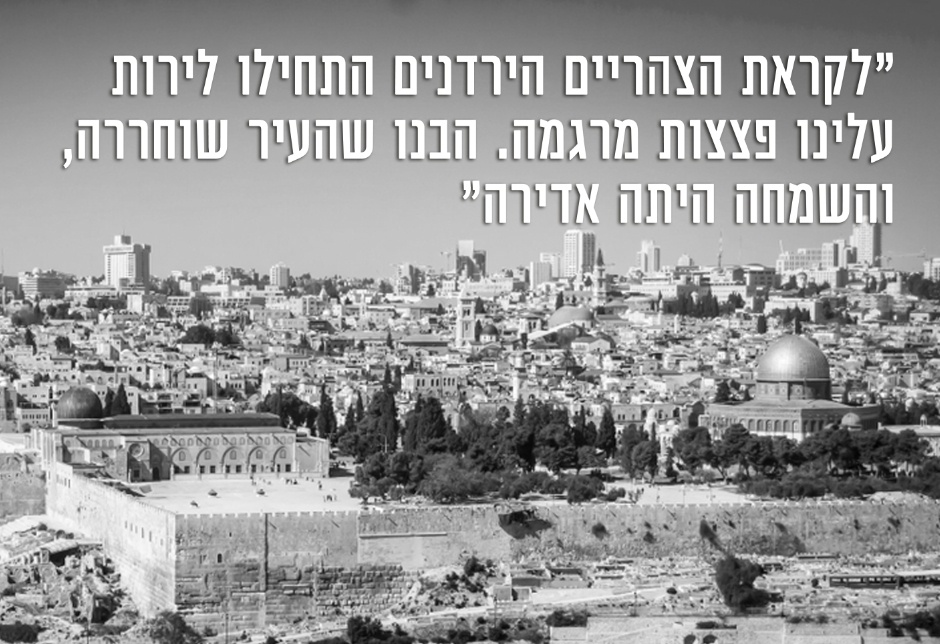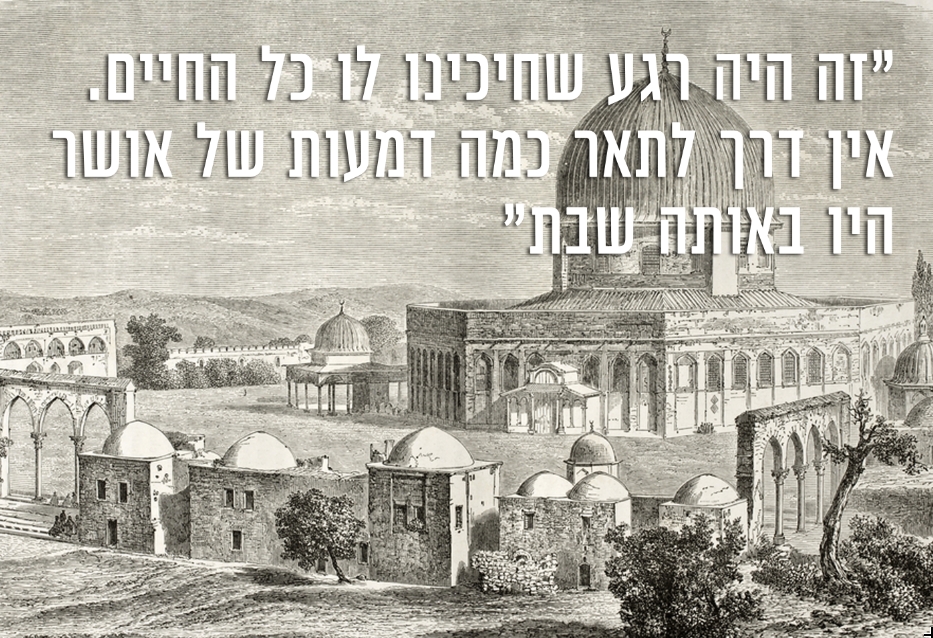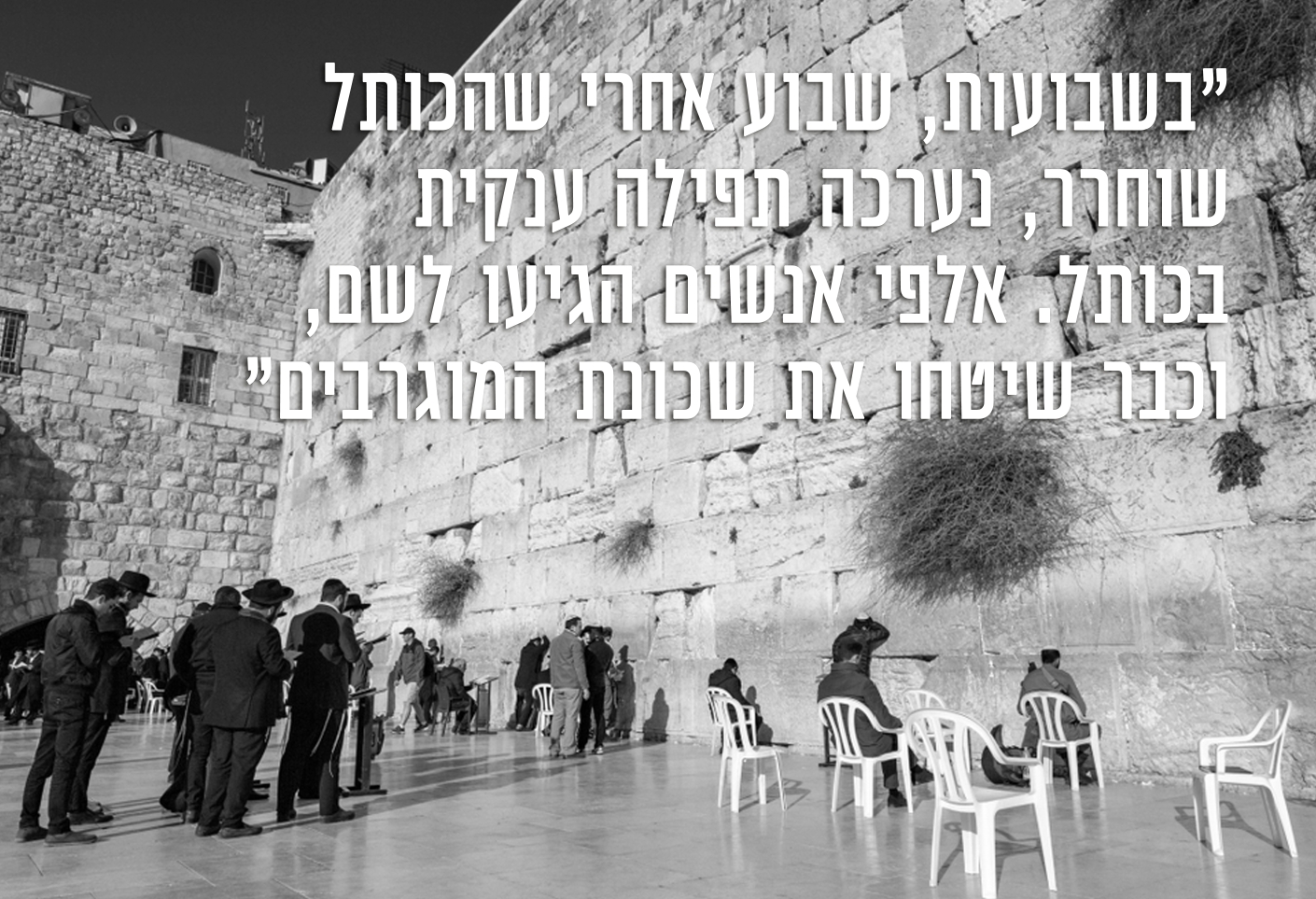The First Prayer at the Western Wall: Interview with the 71-Year-Old Witness of a Historic Moment
He didn't participate in the liberation of Jerusalem, nor did he receive permission to reach the Western Wall immediately after it was captured in the Six-Day War. But ultimately, he took the risk, reached the Wall, and witnessed moments he will never forget. An interview with Yehuda Rabinovitz, 71, who recalls: "The holiday clothes got dirty, but no one cared."
 (Photo Illustration: shutterstock)
(Photo Illustration: shutterstock)For 19 years, Jews were not allowed to approach the Western Wall in the Old City. Since Jerusalem fell to the Jordanians in the War of Independence, walls were built around the eastern part of the city, and the main prayer site for Jews since the destruction of the Temple remained desolate of Jews. But then, during the Six-Day War, Jerusalem was liberated.
It wasn't planned. Initially, Levi Eshkol's government did not want to reconquer Jerusalem and Judea and Samaria, even appealing to King Hussein not to join the war with Egypt and Syria. However, Hussein decided he couldn't remain outside the conflict and began bombing Jerusalem. The IDF attempted to convince the Jordanians to agree to a renewed ceasefire, but the Jordanians refused due to erroneous information from Cairo that claimed the Israeli Air Force had been destroyed instead of the Egyptian one.
And so, on Monday at 13:30, June 5, 1967, the Jordanians captured the Government House, which was under UN control at the time, understanding that from there, they could capture the southern neighborhoods of Jerusalem. The 16th Brigade of the IDF, the Jerusalem Brigade, prepared to remove the threat. Initially, they responded by firing at Jordanian forces moving towards them. Meanwhile, a plan for an attack on the Government House was organized. However, Defense Minister Moshe Dayan refused to approve the attack. Eventually, Dayan approved the attack, and it began at three in the afternoon.
 (Photo: shutterstock)
(Photo: shutterstock)The series of victories by the IDF in Jerusalem during two days of fighting did not yet convince Prime Minister Eshkol and his government that they should finish the job and liberate the Old City. Instead, the government negotiated a ceasefire with the Jordanians, leaving the Old City as a Jordanian enclave. Menachem Begin, who had joined the government on the eve of the war to form a national unity government, heard about the negotiations via the BBC and demanded the capture of the Old City. "It would be a lamentation for generations," he warned. The decision was made, and the next day, Wednesday, at 6:15 in the morning, the IDF was ordered to capture the Old City. Five hours later, the Governor of Jerusalem on behalf of the Jordanian Government signed the surrender document at the Temple Mount.
"The House Doors Were Right on the Plaza of the Wall"
For two more days, entry to the Old City was prohibited, even though no fighting was taking place in Jerusalem. On Shabbat morning, Rabbi Shlomo Goren, the IDF Chief Rabbi at the time, entered the Old City and held the first prayer at the Western Wall after 19 years. Yehuda Rabinovitz (71) was a young man at the time, and he participated in that historic prayer. "It was a moment we waited for all our lives. There are no words to describe how many tears of joy there were on that Shabbat," he recalls.
 (Illustration: shutterstock)
(Illustration: shutterstock)How did you get to the Wall?
"It was a very complex and dangerous story. Throughout the years of Jordanian occupation, the way to enter the Old City was through the Mandelbaum Gate. But only diplomats and ambassadors were allowed to enter there, as well as those traveling to the enclave at Mount Scopus. No one else could pass through. Even on that Shabbat, ordinary people could not pass through and reach the Old City. Only Rabbi Goren received permission with a group of close associates. I think most of them were soldiers, and they were the ones who went to pray at the Wall. I was not in that group."
If you weren't in that group, how did you eventually get to that prayer?
"It was very complicated. We looked for another way to enter the Old City and headed towards Mount Zion. We hoped we would find some gap to get through. Eventually, we found a minefield that allowed passage. People we met on the way mentioned someone who tried to enter the Old City but accidentally went through a minefield and stepped on a mine. I remember asking them if there was any path to the Wall from there, and they said yes, but it was very dangerous. We decided that despite the risk, we would reach the Wall—and indeed, we succeeded. It was a miracle that we managed to pass there without getting hurt."
Anyone who has seen pictures of the Western Wall after Jerusalem's liberation knows the place did not resemble what it is today. The houses of the Mughrabi neighborhood were built up to two meters from the Wall itself, leaving a narrow passageway for prayer. "The area was very narrow, but there weren't many people at the prayer," Rabinovitz recalls. "The house doors were right on the plaza of the Wall. But the truth is that we didn't think about it at all. We were so happy to be near the Wall that it overshadowed everything. I remember it as if it happened yesterday. Later we returned through the Mandelbaum Gate. On Sunday, they began demolishing the Mughrabi neighborhood and clearing the plaza. By Shavuot, everything was already flattened, and everyone could reach the Western Wall."
"For 19 Years, Nothing Was Touched"
Rabinovitz was born in Hadassah Hospital on Mount Scopus, days before the War of Independence broke out. All of the Mount Scopus area was evacuated at that time and became an Israeli enclave surrounded by Jordanians after the war. The access was only in convoys, and under the ceasefire agreement, it was determined that Israel would maintain 85 armed police officers with only light weapons and 33 civilian staff members at the Hebrew University. Meanwhile, the number of Jordanian police in the demilitarized area under Jordanian control was limited to 40.
Days after the conquest, Rabinovitz returned to the hospital where he was born. "It was amazing to see it. For 19 years, nothing was touched. All this time, the hospital stood as it was left. The soldiers who were there apparently did not go inside, or only in a limited area. I came with my brother, who remembered where the room was that my mother stayed in when she gave birth to me. The blanket was still spread as if someone was about to sleep. It was amazing," he recalls.
The joy in Jerusalem after the liberation was uncontrollable. Everyone felt that a great event had occurred before their eyes, but it took time to absorb how significant it was. "It is impossible to describe what we felt in those days. I remember that on Shavuot, just a week after the Wall was liberated, there was a huge prayer at the Wall. Thousands of people came there, and the Mughrabi neighborhood was already flattened. The only problem was that those houses weren't built like today's concrete buildings. They were built from ash, and after demolishing all those houses, the dirt was terrible. There was full ash and dust in the air. The holiday clothes got dirty, but no one cared. It was much more important."
 (Photo: shutterstock)
(Photo: shutterstock)I want to take you a few days back, before the first prayer at the Wall. What were the feelings in Jerusalem when it was understood that the Old City was liberated?
"At first, no one really understood what was happening. In the early hours when they were fighting in Sinai, nothing was happening here. Only towards noon did the Jordanians begin to mortar bomb us. One shell fell near our house on Yeshayahu Street in Kiryat Moshe. But then we realized the city was liberated, and the joy was immense. People went out into the streets, singing and dancing. But I remember that at one of the rallying points where they danced, a city council member from the National Religious Party, David Bergman, told those dancing, 'You are jumping and dancing with joy, but do you know how many casualties there are?' So everyone folded their flags and went inside their homes. Only later did everyone understand the significance of the liberation of Jerusalem."
Even though access to the Wall was denied for 19 years, people in Jerusalem tried to get as close as they could. "Jerusalem was divided. In the middle of Musrara, there were giant walls that separated the neighborhood's parts. This wall was along the entire way. In the area of Jaffa Gate and Damascus Gate, the walls were 8 meters tall. There was no way to enter. We always searched for spots from where we could overlook the Wall," Rabinovitz recalls.
What was the closest place to the Wall you could reach?
"There was a house on the Prophets' Street, at one of its intersections, where we would go up to its roof and see a small edge of the Wall from there. Every holiday, my father and I would go up there and say 'Mipnei chata'einu galinu mei'artzeinu.' We felt this part of the prayer in our bones. In general, every Shabbat, our regular walk was to the Mandelbaum Gate, to see the ambassadors who were allowed to enter the Old City's area. But we couldn't get closer than that. That's why when we realized there was a possibility to reach the Wall, we did everything to get there, including crossing a minefield."

